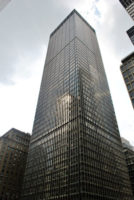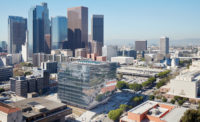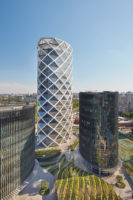The last time a private American company built rail infrastructure was more than 100 years ago. But this summer’s launch of Brightline service, connecting downtown Miami with Fort Lauderdale and West Palm Beach, could propel private passenger rail forward.
The trio of southeast coastal-Florida cities, which comprise the destinations in the first phase of the $3 billion, 235-mile project, are well suited to testing a privately funded rail revival. “We have to challenge the monopoly of the car and adapt to changing trends of millennials,” says Brightline president Mike Reininger, referring to the dual desires of young adults to settle in cities and do without cars. Between 2000 and 2012, this demographic increased in population 24.7 percent around Brightline’s service corridor, 118 percent around Miami alone, while auto congestion in the area consistently ranked among the world’s worst traffic. Brightline uses the century-old Florida East Coast Railway corridor, on which its parent organization ships freight, although the right-of-way access still had to undergo extensive community review.
The company’s new investments should yield benefits for passengers and the wider public. Perhaps most significant, its Miami terminal links three different commuter lines while its groundfloor retail space stitches together four downtown neighborhoods, says Roger Duffy, design partner of Skidmore, Owings & Merrill in New York. The firm designed all three stations in association with Miami-based Zyscovich Architects.
The terminal is noteworthy visually as well. “The architectural expression is in the base structure,” says Duffy, who adds that visible V-bracing and multimodal connections at the smaller Fort Lauderdale and West Palm Beach stations unify the three. Rockwell Group designed much of the stations’ interiors. Working with the client, the firm’s LAB at Rockwell Group conceived the Brightline name and was responsible for the rail line’s colorful branding, including train graphics and car interiors.
The project’s second phase, which is slated to open with the completion of the Intermodal Terminal Facility at Orlando International Airport in 2018, will connect coastal South Florida to that city.







Post a comment to this article
Report Abusive Comment